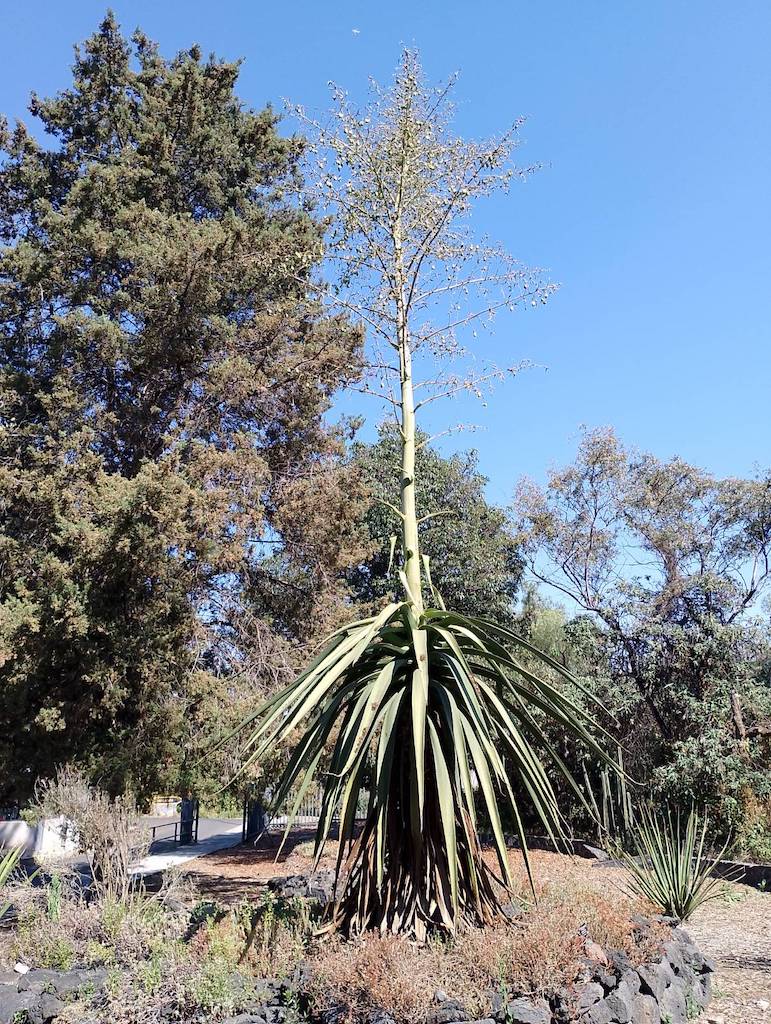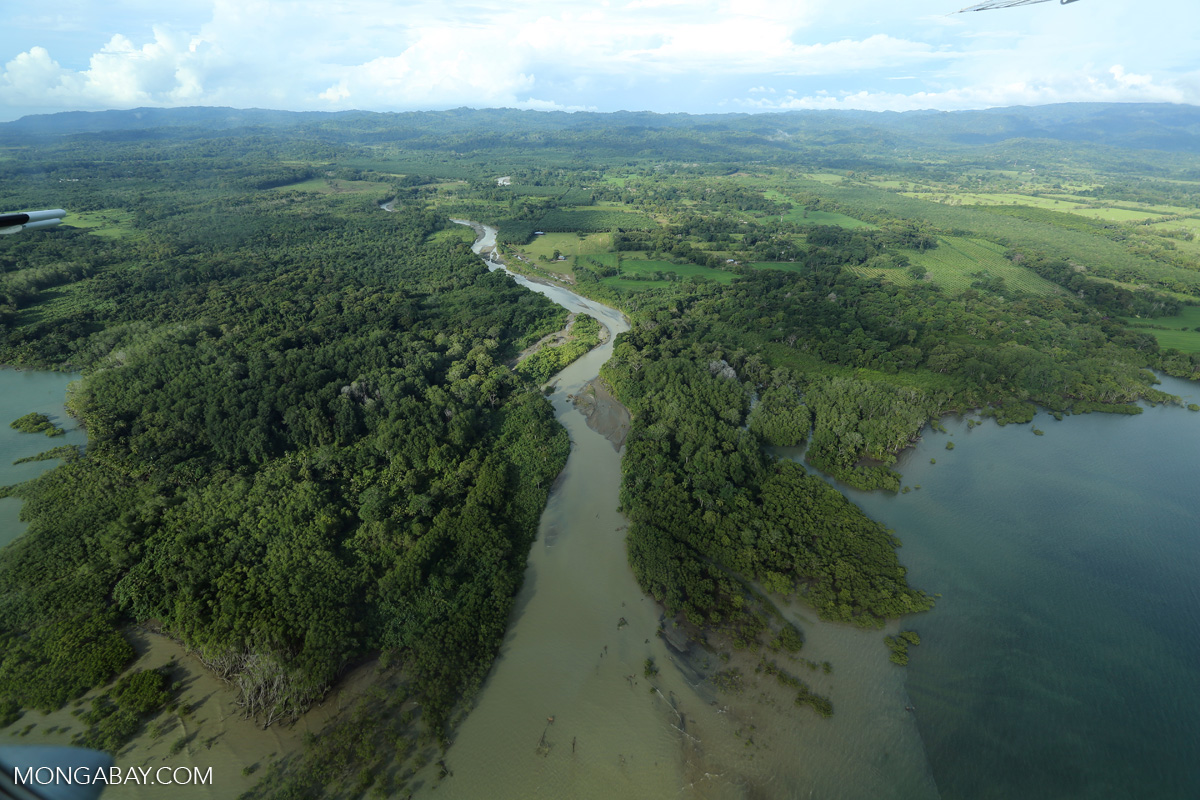- Of the more than 4,000 known tree species found only in Mesoamerica, nearly half are threatened with extinction, according a new assessment.
- Agriculture emerges as the primary threat across the region from both small- and large-scale farming, while logging represents the second major threat in five countries.
- While 72% of threatened tree species occur within protected areas, only 16% of endemic threatened species have recorded conservation actions, and just 18% are protected in botanical collections, highlighting significant gaps in active conservation efforts.
- With 515 threatened tree species shared between countries, researchers emphasize the need for international collaboration and incorporating native threatened species into large-scale tree-planting efforts rather than focusing solely on fast-growing nonnative species.
Lions have been dubbed the king of the jungle, but one could argue the real royalty are the trees, the massive woody beasts that hold down the land and root the web of life that teems around them.
In Mesoamerica (Mexico and Central America), which hosts 10% of all plant life on Earth despite covering only 0.5% of the planet’s land surface, nearly half of all tree species are in trouble.
Of the 4,046 known tree species found only in Mesoamerica, 1,867, or 46%, are threatened with extinction, according to a new study published in the journal Plants, People, Planet. The research represents the first comprehensive assessment of Mesoamerican trees.
The study was part of the Global Tree Assessment, a decade-long initiative to evaluate the conservation status of all the world’s tree species. Researchers used the standards of the IUCN Red List, which tracks how close species are to disappearing worldwide.
The IUCN Red List categorizes species into nine groups, ranging from not evaluated to extinct, by considering factors such as population decline, habitat loss, and population size. Before this assessment, less than 20% (700) of the tree species of the region had been assessed on the IUCN Red List before 2019.

“It’s an important study — essentially a clarion call for conserving endangered tree species in Mesoamerica,” William Laurance, a tropical ecologist at James Cook University in Australia, who wasn’t involved in the research, told Mongabay by email. “Given the many locally endemic tree species in Mesoamerica, one might expect some bad news from a study like this — though the overall picture is even darker than I would have imagined, frankly.”
The assessment found that Guatemala, Nicaragua and El Salvador have the highest percentages of threatened species, at 97%, 95% and 89% respectively.
Mexico, despite having the largest number of tree species in the region, still faces significant challenges, with 888 threatened single-country endemic tree species, while Costa Rica has 227 threatened single-country endemic species. (“Threatened” covers the three IUCN Red List categories of vulnerable, endangered, and critically endangered.)
“Mesoamerica has been hit hard by all kinds of development pressures — forest destruction, logging, expanding roads and infrastructure, mining, and so forth,” Laurance said. “Vast areas of forest have been denuded or fragmented. It’s not a pretty picture, ecologically speaking.”
Across the region, agriculture emerged as the primary threat, both from small-scale and large-scale farming. Logging represented the second-biggest threat in five countries.
The assessment found that three species are already considered extinct, and two are extinct in the wild. All are Mexican endemics that were impacted by farming. The three extinct species are Bourreria veracruzana, Licaria mexicana and Hesperelaea palmeri.

The study, “starkly highlights the dire situation facing Earth’s tree diversity,” Jens-Christian Svenning, a professor at Aarhus University in Denmark, who wasn’t involved in the study, told Mongabay. “This comprehensive regional assessment shows that nearly half of Mesoamerica’s endemic tree species are threatened with extinction, primarily due to agriculture and logging. That’s an alarming figure, especially given the critical ecological and cultural roles trees play in this biodiversity-rich region.”
The research also revealed significant data gaps. In Panama and Belize, for instance, more than one-third of species fall into the IUCN Red List category of data deficient, meaning scientists don’t know enough about them to determine their risk of going extinct. Study lead author Emily Beech, head of conservation prioritization at Botanic Gardens Conservation International, said this highlights the need for more fieldwork and taxonomic studies to clarify conservation status.
“Despite the fact that all trees everywhere need different things, I think if you don’t know which species are threatened, and you don’t know where they are, then that makes it really hard to stop [extinction] from happening accidentally,” Beech told Mongabay.
Despite the grim statistics, conservation is underway. The study found that 72% of threatened tree species are growing within protected areas, and 82% are found in Key Biodiversity Areas.
However, being in a protected areas doesn’t guarantee protection. Threats like land conversion, fire, pests and climate change continue to cause declines even within conservation zones.
In another recent study, Svenning and colleagues found that, “even under moderate climate change, tree communities in many regions face strong exposure to unprecedented climatic conditions.” Together, he said, “these studies underscore that tree conservation cannot wait: both current threats and emerging climate pressures must be addressed in tandem.”
However, the Mesoamerican tree assessment reveals gaps in active conservation efforts. Only 16% of endemic threatened species have recorded conservation actions, and just 18% of threatened species are protected in ex-situ collections like botanical gardens or arboretums.

“Now there are comprehensive assessments for Mesoamerican trees, there is a need for targeted action to prevent species from extinction,” Beech said. Such actions can include species-specific conservation projects, cross-border protections, national-level policy, and the use of native and threatened tree species in large-scale tree planting.
As tree-planting initiatives become more popular, the authors urge project planners to include local threatened species in these efforts instead of just planting fast-growing trees from other places.
The assessment identified 515 threatened tree species that live in two or more countries, so “cross-border cooperation is crucial for preventing extinctions of species that don’t recognize political boundaries,” Beech said.
The Global Tree Portal offers access to information on the world’s nearly 60,000 known tree species, including their distribution, conservation status, and ongoing conservation efforts. Country-specific pages offer downloadable checklists detailing endemism and threat levels.
“These country lists provide a starting point for regional, national or species-specific conservation prioritisation process,” the study said.
“With this collaborative effort to assess the conservation status of tree species in Mesoamerica, we can now prioritize conservation actions for the region’s most threatened tree species,” Beech said. “Now it is possible to pinpoint on a country level which species are most at risk, what threatens them, and what conservation actions are already in place. We hope this will inspire further conservation work to prevent tree extinctions.”
Banner image of a tree in Costa Rica by Rhett A. Butler for Mongabay.
Liz Kimbrough is a senior staff writer for Mongabay and holds a Ph.D. in Ecology and Evolutionary Biology from Tulane University, in New Orleans, Louisiana where she studied the microbiomes of trees. View more of her reporting here.
Study says land restoration worldwide can be funded with tiny fraction of global GDP
Citations:
Beech, E., Alvarez Clare, S., Brewer, S., Coronado, I., Linares, J. L., MacVean, A. L., … Zamora Villalobos, N. (2025). Comprehensive tree assessments for prioritising conservation action in Mesoamerica. Plants, People, Planet. doi:10.1002/ppp3.70045
Boonman, C. C., Hoeks, S., Serra-Diaz, J. M., Guo, W., Enquist, B. J., Maitner, B., … Svenning, J. (2025). High tree diversity exposed to unprecedented macroclimatic conditions even under minimal anthropogenic climate change. Proceedings of the National Academy of Sciences, 122(26). doi:10.1073/pnas.2420059122
FEEDBACK: Use this form to send a message directly to the author of this post. If you want to post a public comment, you can do that at the bottom of the page.
